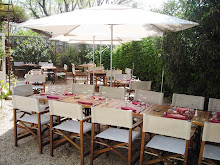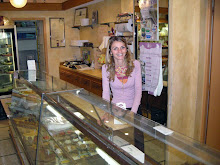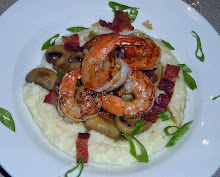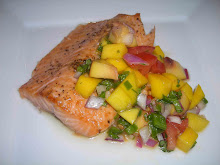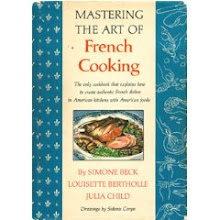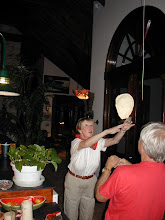We’ve prepared Pork Marsala several times in the past few weeks and the sauce alone is worth making this dish. Truthfully I had forgotten how much I love Chicken and Veal Marsala. So when I spotted this recipe using pork on Pinterest from First Home Love Life, I knew we had to try it.
Using a wine such as Marsala gives a restaurant-quality finishing touch to dishes. In this particular case the Marsala is simmered in chicken broth along with meaty baby bella mushrooms and shallots, giving the dish a rich and complex character.
Marsala wine is a fortified wine produced in the region surrounding the city of Marsala on the island of Sicily. It has a raisin-like flavor and is served at room temperature. Although we mostly think of Marsala in cooking, traditionally it was served between the first and second course of a meal or on its own with a tasty cheese. Marsala can also be served as an after dinner drink.
There are two varieties of Marsala - dry or sweet. The dry is used for savory dishes and adds a nutty flavor and carmelization to the fond of veal, chicken or beef dishes. The sweet is used mainly in desserts such as zabaglione and tiramisu.
This upscale sauce alone is reason enough to try this dish. If you need more of an incentive, it’s simple to make and comes together quickly in 30 minutes or less.
Pork Marsala
Slightly adapted from First Home Love Life, serves 4
Printable Recipe
4 boneless pork chops, about ¾ to 1” thick
About 1/3 cup all purpose flour for dredging
½ to 1 teaspoon garlic powder
Kosher salt and freshly ground black pepper to taste
2 tablespoons extra-virgin olive oil
2 tablespoons butter
8 ounces sliced baby bella mushrooms
2 peeled and thinly sliced shallots
2 peeled and chopped garlic cloves
½ cup dry Marsala wine
½ cup low-sodium, low fat chicken broth or homemade
1 tablespoon chopped fresh thyme leaves or 1 teaspoon dried
4 fresh thyme sprigs for garnish
On a plate or a piece of waxed paper, mix flour and garlic powder together. Season pork chops with Kosher salt and freshly ground black pepper on both sides. Dredge the seasoned pork chops in the flour and garlic powder mixture, then tap off excess.
In a non-stick sauté pan, add olive oil and butter and heat the pan over medium-high heat. When butter is frothy, add pork chops to the pan, turning once, allowing both sides to get golden brown. When pork reaches an internal temperature of 145 degrees F, which is medium rare, or 160 degrees F, which is medium, remove the chops to a plate and cover. (These temperatures are the guideline from the National Pork Council. We like our pork chops a little pinker, around 138 degrees F.)
Lower the heat to medium-low and add mushrooms and sauté, stirring occasionally until they have rendered their juices and are brown. Add shallots and garlic and cook for 1 – 2 minutes more, taking care that the shallots and garlic don’t burn. Add the Marsala wine and chicken broth. Using a wooden spoon, scrape up the fond (brown bits) from the bottom of the pan. Add the chopped fresh thyme, stir to incorporate, then cover the pan and let simmer for about 5 to 8 minutes more.
If the sauce has not thickened to your liking, make an arrowroot & water slurry (mix equal parts arrowroot and cold water in a small dish with a spoon), then stir the slurry into the sauce until the sauce is sufficiently thickened.
Serve the sauce over the pork chops, then garnish each chop with a fresh sprig of thyme. Mashed or oven roasted potatoes make a nice accompaniment.
Variation: If you like, add a teaspoon of Dijon mustard to the sauce, which is always good with pork, when the fresh thyme is added.
For better viewing, click photos to enlarge.
This recipe will be shared with Foodie Friday at Rattlebridge Farms and Miz Helen’s Country Kitchen’s Full Plate Thursday.
We hope you’re having a nice week
and thank you for visiting My Carolina Kitchen.

















